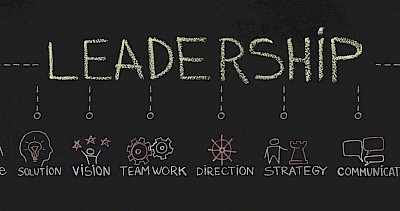
From employee to manager
From employee to manager
The change from employee to manager is a formative phase in your professional development. You are now at the centre of new challenges and opportunities. Suddenly you are not only responsible for your own tasks, but you are leading a team and making strategic decisions. In this new leadership role, you will learn to develop your own leadership style that takes into account both the needs of your team and the goals of the company.
What makes a good leader
With the new leadership position and the change from employee to leader come expanded leadership responsibilities. You are not only responsible for your own activities, but have leadership responsibility for a team. This means making strategic decisions, shaping the daily work routine and developing your own leadership style. In doing so, it is essential to consider both the individual needs of the employees and the overall goals of the company. Self-reflection and adaptability become central elements in everyday life. We give you valuable tips on how to successfully make the transition from employee to manager and how to further develop your leadership style.
Effective communication and active listening
The transition from employee to leader requires a deeper level of communication. It is not enough to simply send messages. They must be received and properly understood in staff meetings, for example. Active listening and assessing feedback are central here. A team leader who really listens captures not only words but also emotions. In a feedback-oriented working world, such conversation skills are the key to leadership success.
Emotional intelligence
Emotional intelligence is essential for the transition from employee to leader. Above all, it is about understanding not only one's own emotions, but also those of other personalities. A high level of emotional intelligence promotes interpersonal relationships, facilitates conflict management and strengthens trust in the team.
Vitamin B
A solid network is indispensable when making a career leap from employee to manager. It opens doors to valuable resources, facilitates the exchange of ideas and consolidates one's position in the professional environment. Regular meetings and the exchange of experiences with industry experts and other managers are of central importance.
Personal development
The transition from employee to manager also means continuously developing on a personal level and practising patience and empathy. In addition to professional knowledge, continuous training with subject-relevant seminar content and the introduction of new ideas are essential in order to not only assess the current situation in the team, but also to be able to change it in the long term. Attending continuing education events, reading reference books and exchanging ideas with industry experts can help. It is crucial to be open to new things and to adapt to the changing challenges of leadership.
Assertiveness
In a leadership position, or after being appointed from employee to leader, it is essential to make clear decisions and implement them consistently. Assertiveness means remaining firm even in unpleasant situations and setting clear guidelines. It is important to maintain a balance between firmness and empathy.
Delegation of tasks
As a supervisor who has risen from employee to manager, it is essential to distribute tasks efficiently and not always take everything into your own hands. After all, you don't have the time to always take care of everything yourself. The art of delegation not only promotes productivity, but also allows employees to demonstrate their skills.
Taking on responsibility
Of course, moving from employee to manager also means carrying a greater burden of responsibility. It is not just about individual leadership tasks, but about the whole team and its concrete results. This requires courage, integrity and the ability to handle both successes and challenges appropriately. It is essential to make purposeful decisions and take responsibility for the team's actions and results.
Motivate employees
Demonstrating motivational behaviour is a key element to excelling in a supervisor position. Through recognition, clear goal setting and regular feedback, team leaders can boost morale and achieve outstanding results. When moving from employee to manager, it is essential to find the balance between incentive and support.
Empathy and care
Empathy and caring are indispensable qualities for a leadership position. They enable you to recognise and respond to the emotions and needs of the team. A leader who shows empathy creates an appreciative environment. In combination with caring, this creates a trusting working atmosphere.
Decisiveness
In a leadership role, you will often be faced with situations where quick and clear decisions have to be made. It is important to rely on both professional expertise and the assessments of the team. A competent leader weighs all available information, critically assesses it and then makes an informed decision. This requires not only courage, but also the willingness to deal with the consequences and to represent them collegially.
Determination
Determination is an indispensable attribute that involves setting clear visions and goals for the team and the company and working consistently towards them. A leader should not only have the big corporate goals in mind, but also the daily tasks and challenges. It is important not to be discouraged by setbacks.
Commitment to the team
Commitment to the team is of central importance in the process from employee to leader. In the often challenging sandwich position, between higher management and one's own team members, it is a matter of not only giving instructions as a supervisor, but also actively providing support and resources. An employee with leadership responsibility should always be available, assist with challenges and encourage the team in their efforts.
Tasks as a team or project leader
The transition from employee to manager brings with it a host of new tasks and responsibilities. These range from strategic planning to day-to-day staff management. Here are some of the key leadership tasks:
- Strategic planning and goal setting: in a managerial position, it is your job to define the long-term goals of the company or your department and determine the necessary steps to achieve them.
- Managing people: This includes conducting staff appraisals as well as meetings, setting clear expectations and providing feedback and suggestions for continuous improvement.
- Decision-making: You will often be put in the position of making difficult decisions that can affect the whole organisation.
- Resource management: Resources (time, budget, staff) to achieve set goals.
- Training and development: You are equally responsible for your own development as well as the development of your team.
These tasks are only an excerpt from the wide range of responsibilities that a manager has to take on.
Potential problems & challenges for aspiring leaders
The transition from employee to leader is not always smooth. There are numerous challenges and issues that can arise along the way. Here are some of the most common difficulties you may face:
- Newly appointed leaders are not always met with immediate acceptance. There is a need to gain trust and respect through clear communication and consistent decision-making.
- Finding the right balance between collegial closeness and professional distance can be a balancing act.
- More responsibility often means more tasks; efficient time management becomes key.
- The new position can bring uncertainties; self-reflection and exchange with experienced managers help here.
- Quick results are often expected. Clear communication with management about realistic goals is essential.
It is important to seek support when needed, be it through training with appropriate seminar content, coaching or exchange with other supervisors to successfully face these challenges.
5 tips on how to make the transition from employee to manager a successful one.
The transition from employee to manager is an exciting but challenging time. Here are 5 practical tips that can help you successfully manage this transition:
- Take time regularly to reflect on your leadership style and behaviour. What works well? Where is there potential for improvement?
- Talk openly with your team about your expectations, but also listen actively to understand their needs and suggestions.
- Always share with peers to learn from experience and support each other.
- Learn to delegate tasks effectively. This not only takes the pressure off you, but also encourages ownership among your staff.
- Encourage your team to give regular feedback. This helps you to continuously improve and shows appreciation.
The transition from employee to manager is a journey of personal and professional development. With the right strategies and an open mindset, you can successfully master this challenge.
Why internal promotion is often desired
The internal transition from employee to manager is a preferred method in many companies to fill management positions. This usually creates a win-win situation: the company benefits from the employee's experience and knowledge, while the employee gets the chance to advance his or her career.
Advantages for the company
The selected internal manager is already familiar with the company culture, processes and employees, which eases the transition from employee to manager and reduces the induction period. In addition, long-serving employees have often gained the trust of their colleagues and superiors; a fact that provides a solid foundation for a successful leadership role. Companies also save costs and time that would otherwise be spent recruiting external people to take on a leadership position.
Advantages for the employee
An internal transition from employee to leader can be seen as a sign of appreciation. It motivates and inspires other employees when they realise that commitment and hard work can lead to promotions. It also strengthens loyalty to the company. Employees who are promoted internally are already familiar with the values and culture of the company and can carry these forward in their new role.
Conclusion: Mastering the journey from employee to leader
The journey from employee to leader is a challenging but rewarding one. It requires not only the necessary technical skills, but also a variety of interpersonal skills, from effective communication to emotional intelligence and assertiveness. However, with the right resources and a supportive corporate culture, this transition from employee to leader can be smooth and successful.








